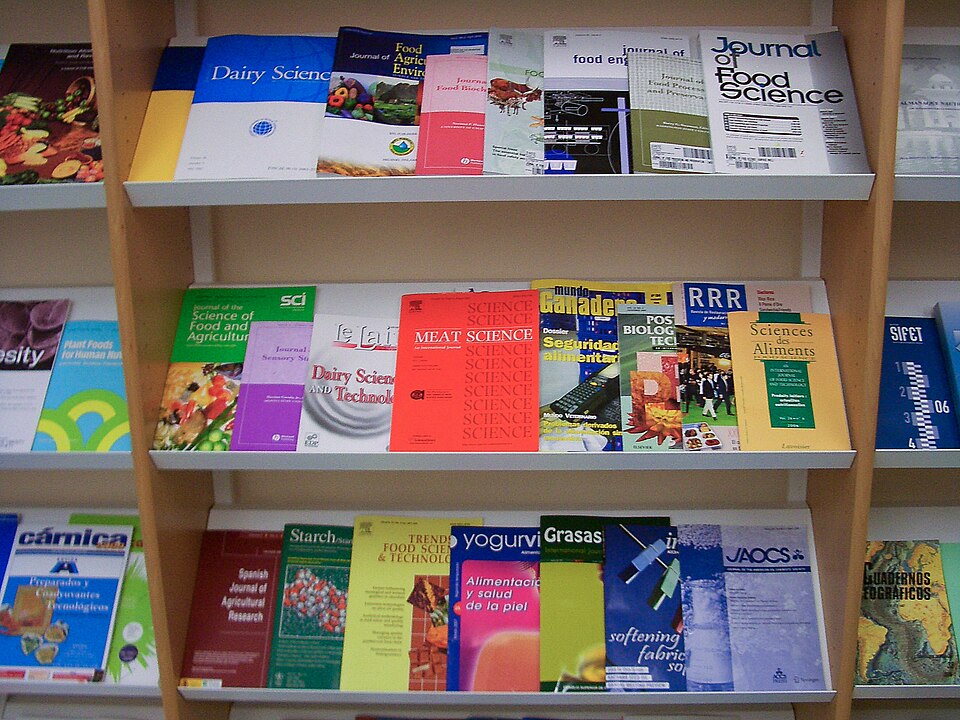How Academics Are Pushing Back on the For-Profit Academic Publishing Industry
These scholars are fighting the rampant exploitation and high article processing charges in traditional academic publishing.
According to the independent news organization the Conversation, five publishing houses control about half the global academic publishing industry’s market share. Relx, the parent company of the “biggest player in this business,” Elsevier, reaped a profit margin of almost 40 percent in 2023, “rivalling tech giants such as Microsoft and Google,” pointed out the March 2025 article.
“Many of the most trusted and prestigious research journals are owned by commercial publishers,” the Conversation noted. “For example, the Lancet is owned by Elsevier.”
In 2024, the editorial board for the paleoanthropology bulletin Journal of Human Evolution (JHE) collectively resigned. Besides deficient copyediting and unethical use of AI, which resulted in what the journal Science calls “scientifically significant errors,” the board accused its publisher, Elsevier, of overcharging.
High article processing charges (APCs) are common in the for-profit academic publishing industry. The 2021 paper “Equitable Open Access Publishing: Changing the Financial Power Dynamics in Academia” notes that high APCs “exacerbate disparities between funded and unfunded researchers.”
“Traditional academic publishers exploit scholars in several ways,” says Denis Bourguet, co-founder of Peer Community In (PCI), a nonprofit platform that offers “peer review, recommendation, and publication of scientific articles in open access (OA) for free,” according to its website. Bourguet says common practices within the traditional academic publishing model commodify scholarly knowledge, treating it not as a public good but as a resource to extract profit.
“Researchers produce articles, conduct peer reviews, and often serve as editors, typically without pay, while publishers profit by charging high fees to both authors and readers. With this model, authors must pay substantial article processing charges to publish in open access. Yet, in some journals, since some articles remain behind paywalls, universities and libraries must pay subscriptions to give their members free access to the full content of these journals,” adds Bourguet.
PCI co-founder Thomas Guillemaud notes that costly paywalls make “access difficult for researchers without institutional support, especially in low-income regions.” He adds that the “pay-to-read or pay-to-publish model encourages researchers to focus on publishing in prestigious journals for career advancement, sometimes at the expense of research quality. This ‘prestige economy’ can distort scientific priorities and integrity. Pressures to publish in prestigious journals contribute to issues like irreproducible results, publication bias, and even scientific misconduct.”
According to a 2025 report in the Proceedings of the National Academy of Sciences, despite major advances such as the antiretroviral therapy and vaccines during the pandemic, science “faces challenges due to the incentive systems,” with for-profit publishers trying to “capitalize on unpaid reviewers and [charging] high fees for sharing and accessing knowledge.”
PCI is one of many academic-led initiatives challenging the dominance of for-profit publishers and, as Guillemaud puts it, “reshaping scholarly communication.”
Lifecycle Journal, for instance, does not charge its authors or readers. It “is a new transparent model of scholarly communication that aims to put publishing and evaluation in the control of the scholarly community itself,” its website states.
Similarly, SciPost, “the home of genuine open publishing,” claims, “We don’t charge authors, we don’t charge readers, we don’t send bills to anybody for our services, and we certainly don’t make any profit; we are an academic community service surviving on support from organizations that benefit from our activities. Said otherwise, our system is academia’s antidote to APCs.”
The Free Journal Network curates and promotes Diamond OA journals that charge neither authors nor readers, ensuring adherence to fair open access principles and supporting a growing ecosystem of scholar-led publications.
The French nonprofit publishing platform Centre Mersenne “endeavors to fight research output’s privatization and outrageous profit-making out of the scientific commons,” according to its site. Its “agenda is to support Diamond Open Access or Gold OA without APC (no fees required to read nor to publish).”
Diamond and Gold are two of many OA publishing models. Journals that use the Diamond Open Access model do not charge fees for readers or authors. Funding comes from academic institutions, research funders, philanthropists, governments, advertisers, and nonprofit organizations. Meanwhile, the Medical College of Wisconsin describes the Green OA model as “the practice of placing a version of an author’s manuscript into a repository, making it freely accessible for everyone… No article processing charges are paid.” The Georgia State University Library also outlines various types of OA models.
Besides adopting the OA model, academics are countering for-profit academic journals by publishing academic-led journals, putting pressure on publishers to lower their fees, renegotiating contracts, and forming consortia.
PCI embraces the Diamond OA model. Its support officer, Barbara Class, explains that its Peer Community Journal is free for authors and readers. This “removes financial barriers imposed by article processing charges or subscription fees common in for-profit publishing. In addition, PCI publishes peer reviews and editorial decisions openly, promoting transparency and accountability in contrast to the often-opaque evaluation processes performed by for-profit journals.” Class adds, “PCI focuses on the intrinsic value and quality of research rather than journal-based metrics.”
Guillemaud says PCI is sustained through a “community-driven funding model based primarily on small, recurring public subsidies from universities, libraries, and research institutions. These institutions contribute annually on a pay-what-you-can basis… allowing broad participation regardless of size or budget. This stable and diversified funding base enables PCI to cover its operational costs without large private donors or charging fees to authors or readers.”



